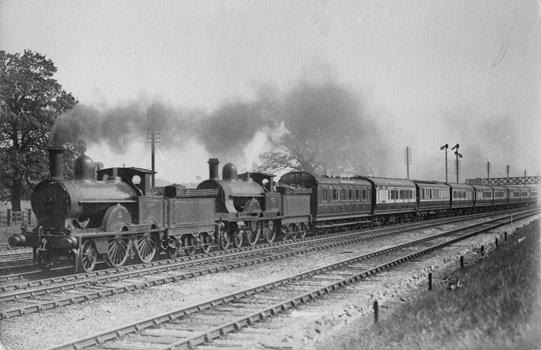The Development of Passenger Services
Early Days
Whilst many early railways were promoted and built to carry merchandise the need for passenger travel was quickly realised and accommodated. Early passenger carriages were little more than rail mounted stage coaches for the reasonably wealthy and open trucks for the less fortunate.


Carriages evolve
The early railway companies gradually improved passenger accommodation, partly to meet passenger demands and partly driven by legislation. By the time the LNWR was formed in 1846 there was the beginnings of a distinct railway style emerging. This process continued right on into the twentieth century by which time features like lavatory provision, corridor carriages and dining cars had become commonplace.



Services develop
As Britain’s rail network grew and more and more cities and towns were rail connected so did the number of passenger services provided grow rapidly. The Great Exhibition of 1851 had shown the huge potential for excursion traffic. Local services allowed the development of suburbs and the introduction of paid holidays (1871 Bank Holidays act) helped popularise the British seaside and inland tourist attractions. As we moved into the twentieth century and workers began to have annual holidays the railway met the challenge by putting on services to match the new requirements. See Excursions and Holidays.
From the earliest days of railway travel, when journeys that now take a couple of hours took a whole day, the companies had to provide 20-minute stops at intermediate stations such as Wolverton, Crewe and Preston, to allow passengers to buy a meal. Catering for passengers developed from this into Refreshment Rooms at many stations, Dining Cars on the main trains and hotels at large stations. More information about these services can be found at Catering for the Traveller.
The railways carried parcels traffic from the very early days, this was distinct from goods traffic and was run by the passenger department. More details here.
This was also the era of the through carriage, with a carriage or number of carriages being marshalled into two or more trains along its route. This included being handed from one railway company to another. At a time when people often travelled with large amounts of luggage staying in the same carriage was an attractive proposition. Many carriages designed for these through services included a luggage compartment. People often travelled with large amounts of luggage hence extensive luggage accommodation was provided in all but short distance services. Typical luggage allowances per passenger were 150lbs (68kg) for 1st class, 120lbs (54kg) for 2nd class and 100lbs (45kg) for 3rd class and more could be carried at extra cost. Sometimes whole trains travelled from the LNWR over another company’s track to reach a distant destination. An example would be the famous Sunny South Specials, carriages from which ended up at several south coast resorts. More information on through services is given in the two downloadable pdfs listed below. Both are the work of our Archivist Dave Pennington. The LNWR used the term “foreign” to denote lines run by other UK railway companies.


